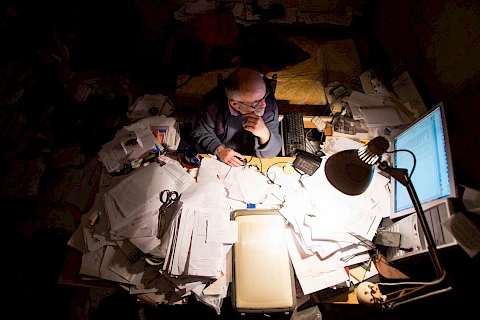
Hoarding is a common issue among seniors. For many, it's a way of holding onto memories or a sense of security. However, hoarding can lead to numerous hidden dangers. Understanding these risks is pivotal for caregivers and family members. Caregivers must learn about the invisible dangers of hoarding and how to take effective action.
Health Hazards
One of the most severe issues with hoarding is its hidden health risks.
1. Mold and Mildew
When items are piled up and stored improperly, mold and mildew can develop. These fungi thrive in dark, damp places and spread quickly. Mold exposure can cause respiratory issues, skin irritations, and severe allergic reactions in seniors. Prolonged exposure can even lead to chronic lung conditions.
2. Worsening Air Quality
Accumulation of dust and allergens is another major concern. As items pile up, regular cleaning becomes nearly impossible. This can lead to a build-up of dust, pet dander, and other allergens. Poor air quality can worsen respiratory issues, such as asthma or chronic obstructive pulmonary disease, making it harder for seniors to breathe and stay healthy.
Safety Risks
The safety risks associated with hoarding are significant and often overlooked.
3. Fire Hazards
Clutter provides more fuel for a fire, making it easier for flames to spread. If a fire breaks out, the clutter can hinder emergency responders from reaching those in need, increasing the danger and making it harder to extinguish the fire quickly.
4. Trip and Fall Hazards
Stacks of belongings can create obstructed walkways, posing serious trip and fall hazards. Seniors are already at higher risk for falls, and the added obstacles make moving around the house even more dangerous. Falls can lead to severe injuries like broken bones or head trauma, which can be life-threatening for older adults.
Mental and Emotional Impact
The clutter from hoarding doesn't just impact physical health; it affects mental well-being too.
5. Stress and Anxiety
Living in a cluttered environment can be emotionally draining. The constant presence of disorder can create stress and anxiety. This emotional burden can negatively impact a senior's mental health, leading to feelings of helplessness and depression.
6. Social Isolation
Hoarding often results in social isolation. Seniors may feel embarrassed by their living conditions and withdraw from social activities. This isolation can strain relationships with family and friends, further impairing their emotional health and well-being.
Structural Damage
Hoarding can also cause significant damage to the home itself.
7. Weight and Pressure on Building
The weight of accumulated items can put undue pressure on a house's structure. The excess weight can cause floors to sag and walls to crack. This can lead to costly repairs and maintenance, creating additional stress for seniors and their families.
8. Pest Infestations
Cluttered homes are ideal environments for pests like rodents and insects. These pests can multiply quickly, carrying diseases and contaminating living areas. The health risks these infestations pose make it crucial to address hoarding issues promptly.
Discover How Senior Helpers Can Safeguard Seniors from the Unseen Hazards of Hoarding
Hoarding among seniors presents several invisible dangers, from health hazards to safety risks to emotional impacts and structural damage. Addressing these issues is necessary for their well-being. Caring for a loved one who hoards can be challenging, but taking action is essential.
Families and caregivers in Aurora, Lafayette, Wheat Ridge, Northglenn, and Arvada should consider reaching out to Senior Helpers Denver North. We can provide the support and assistance needed to create a safer, healthier living environment for your loved ones. Contact us today to start making a positive change.